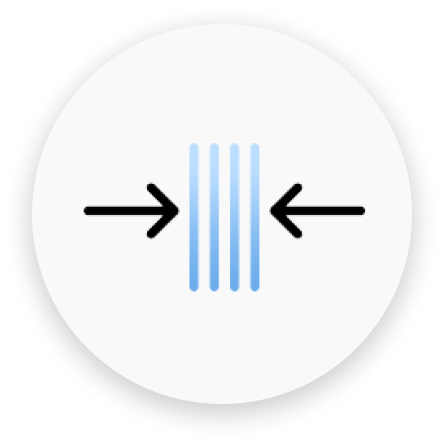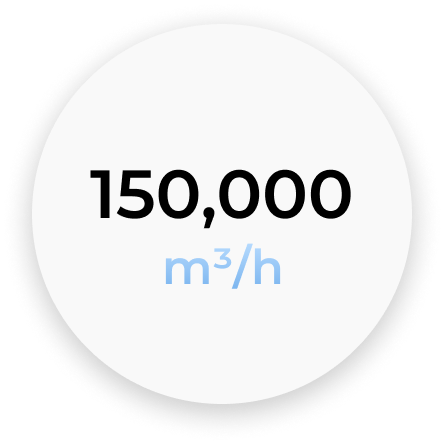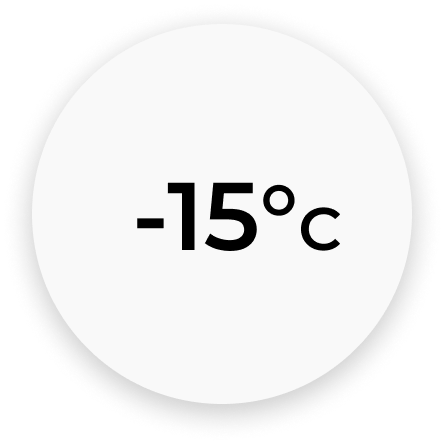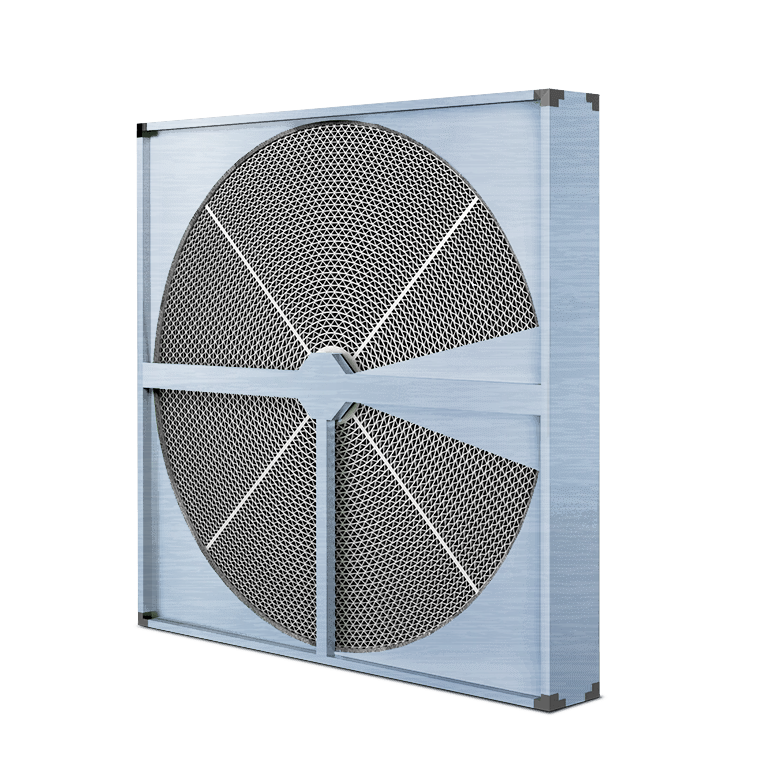


ROTARY HEAT EXCHANGER
ROTARY HEAT EXCHANGER
Rotary aluminum air-to-air heat exchangers with an efficiency above 85%. Custom sizes are available.


- Frost resistance -15°C and above.
- The volume of processed air is from 1000 m3/h to 150000 m3/h.
- Movable sensitivity mass with different types of coatings.
- For installation into AHUS in domestic, commercial, or industrial applications.
- Solutions for aggressive environments, hot and cold-weather regions.
- Available in custom frame sizes and different widths.
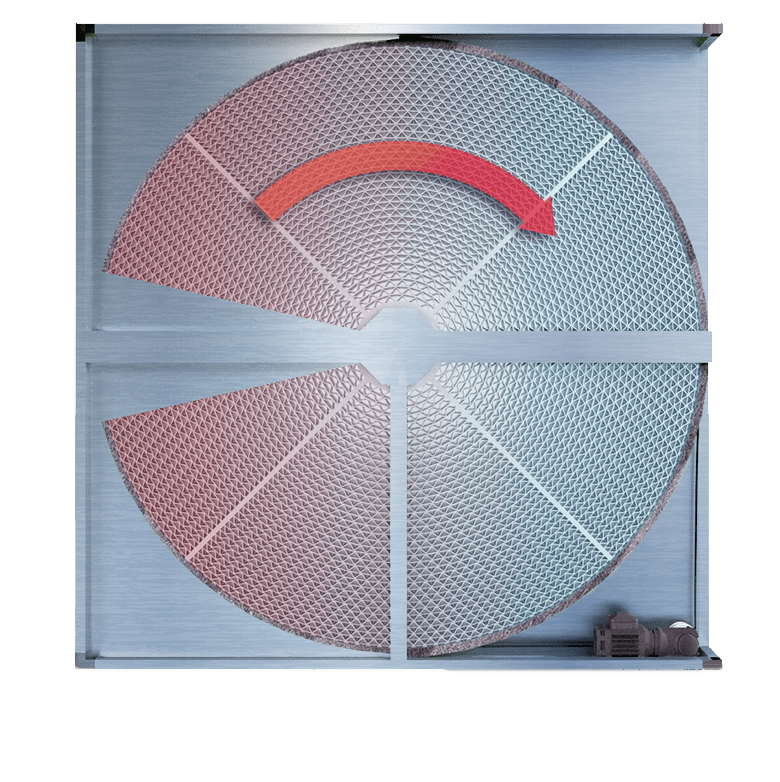
Maximum efficiency
85
Depending on the direction of air movement in the heat exchanger, the heat exchanger foil heats up or cools down.
ROTARY HEAT EXCHANGER CASING
The casing of the rotary heat exchanger can be made of aluminum profile or galvanized steel according to the individual request. All products can be both in galvanized and painted cases, which protect the heat exchanger from corrosion. Stainless steel casings are available on request.
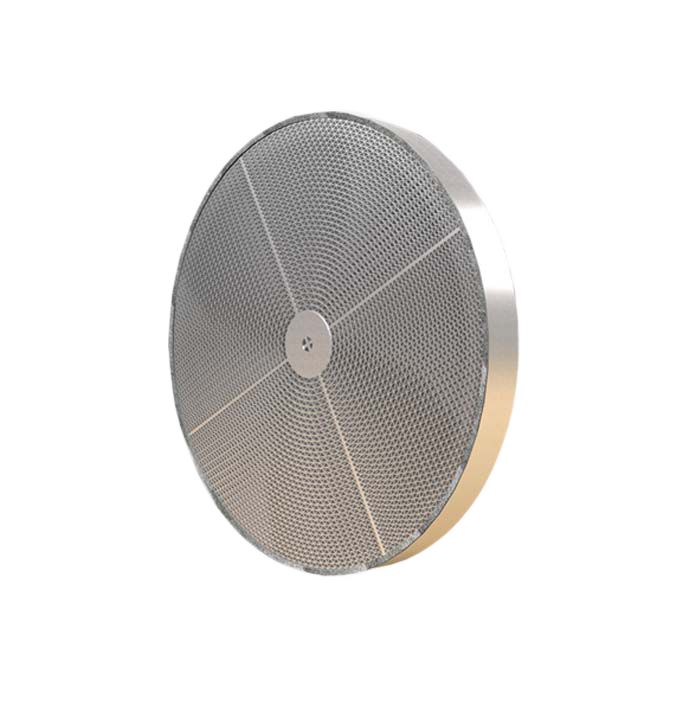 WHEEL ONLY
WHEEL ONLY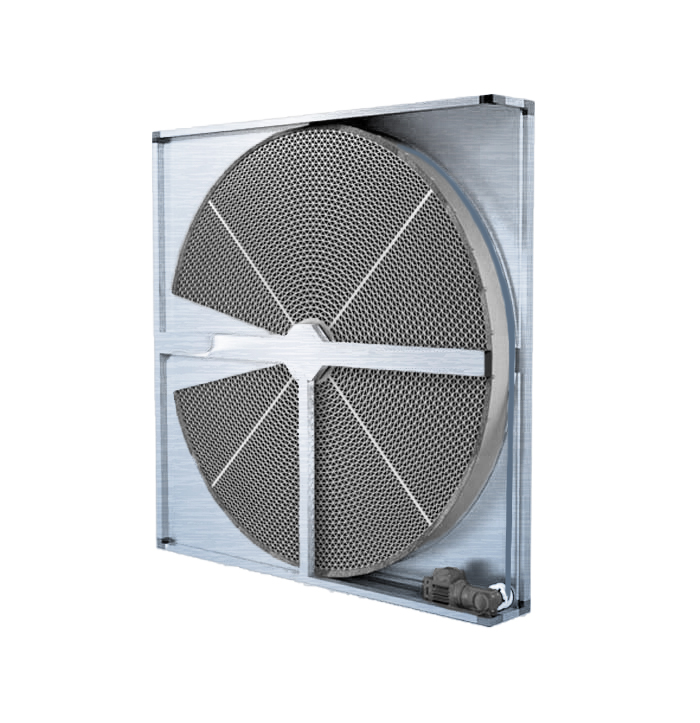 STANDARD CASING
STANDARD CASING CASING WITH INSULATION
CASING WITH INSULATIONROTARY HEAT EXCHANGER THERMAL WHEEL
Wheel width: 200 mm, 250 mm, 400 mm.
Wave height: 1.4 mm, 1.6 mm, 1.8 mm, 2.0 mm, 2.5 mm.
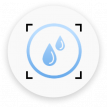 CONDENSATION WHEEL
CONDENSATION WHEELThe rotor is made of uncoated aluminum foil and does not transmit humidity above the dew point. Suitable for standard heat recovery units.
 EPOXY COATED WHEEL
EPOXY COATED WHEELThe wheel is made of aluminum with an epoxy coating that protects the rotor from aggressive environments and corrosion. Suitable for use near pools, in coastal regions, and in paint booths.
 ENTHALPY WHEEL
ENTHALPY WHEELThe enthalpy wheel has a hygroscopic coating that can absorb humidity and partially recuperate it. This allows you to avoid air overdrying in the cold season.
 SORPTION WHEEL
SORPTION WHEELAluminum wheel with moisture-absorbing coating. It is used to remove moisture in winter and summer, as well as to transfer sensible and latent heat energy.
ANTIBACTERIAL TREATMENT
- The aluminum foil used for the production of rotary heat exchangers has an initial antibacterial treatment which makes an unfavorable environment for the reproduction of microbes, viruses, and fungi.
PURGE SECTOR
-
To minimize cross-contamination of the air, a purge sector can be installed on the cross beam of the rotor. This sector cleans the channels of the rotor and is active only when the airflows are opposite to each other.
BELT TYPES
-
Two types of drive belts are used depending on the size of the rotor. A round V-belt is applied to the rotor with a diameter of up to 2000 mm and is coupled by means of welding or a metal clip. For rotors with a diameter of more than 2000 mm, a perforated trapezoidal V-belt is applied, which is coupled in a loop by means of a metal clip.
AIR LEAKAGE
-
The main disadvantage of a rotary heat exchanger is air leakage through the seals between the air streams. With an increase in the degree of regeneration and the size of the heat exchanger, the problem may worsen. Our rotary heat exchanger is characterized by sealed connections, which reduce leakage to a minimum and save energy.

ROTARY HEAT EXCHANGER EFFICIENCY AND PRESSURE DROP
Wave height and rotor size are parameters that affect its efficiency. At smaller distances, the efficiency increases.
We offer five height options: 1.4 mm, 1.6 mm, 1.8 mm, 2.0 mm, and 2.5 mm. The pressure drop will be increased accordingly.
Condensation may occur, therefore it is recommended to use a drain pan.
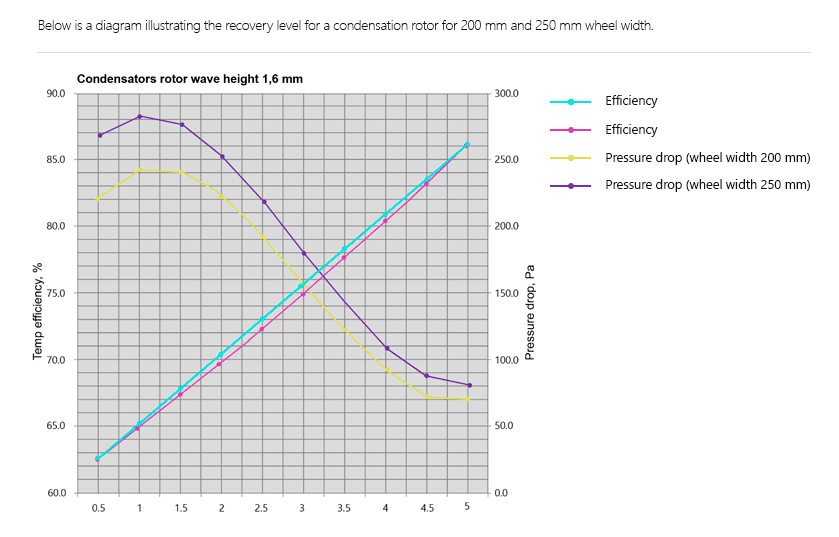
MOTOR POSITIONS

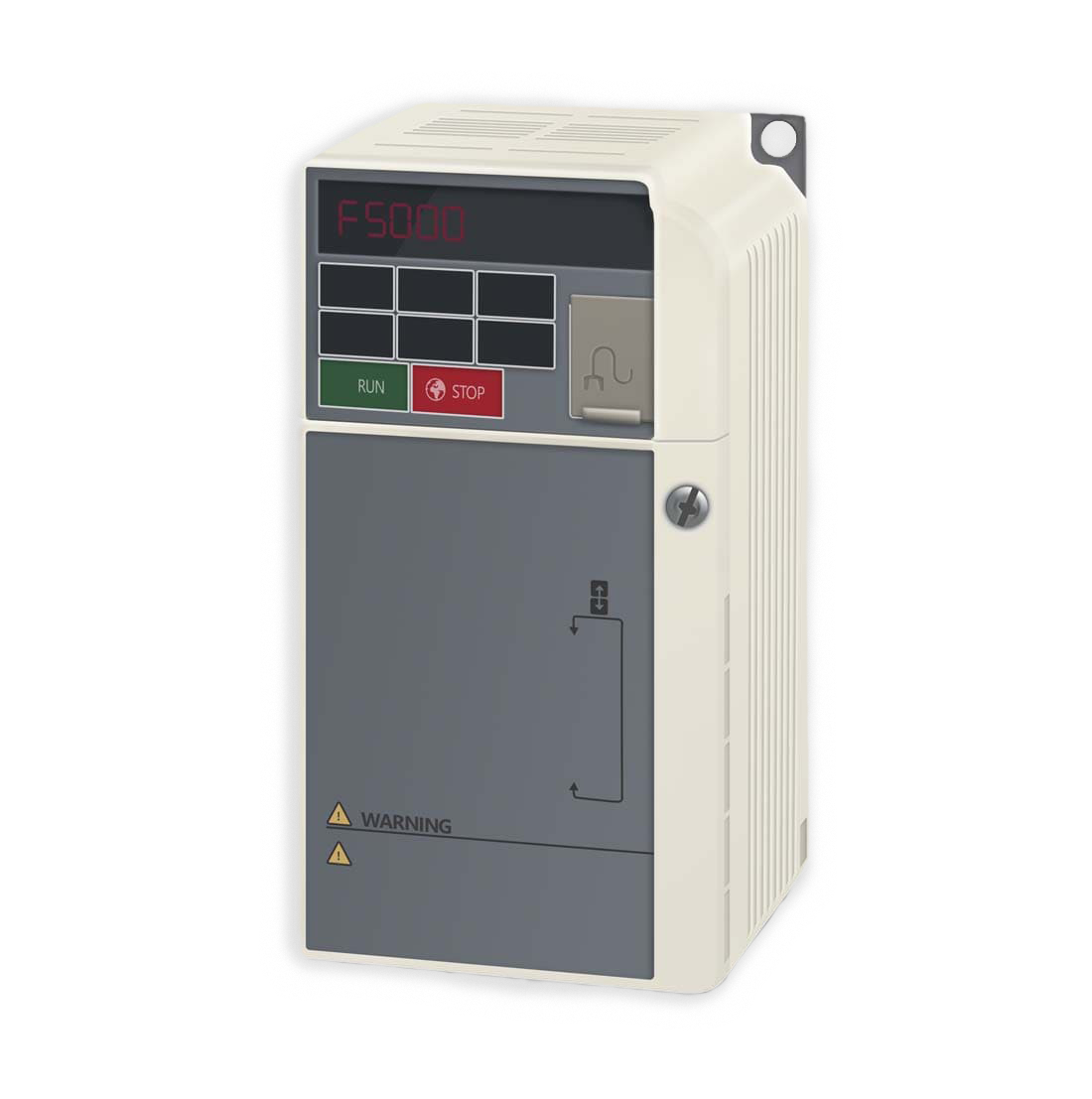
To achieve the highest possible efficiency, we offer the most suitable frequency converter for each rotor. Thanks to the industrial controller's patented design and modern manufacturing, it is built for a 10-year service life without maintenance. The failure rate in the field is less than 1 in 10,000, allowing the inverter to outperform all other inverters long after its implementation.
OPTIONS
- Motor protection
- Programmable rotor cleaning cycle
- Error messages
- Control terminal board with memorized parameters (patented)
- Fast CPU Low noise technology (patented)
- Online settings (patented)
- Integrated security in accordance with EN954-1
- Communication with Modbus is available
SPARE PARTS
Spare parts for rotary heat exchangers are available in our warehouse and can be delivered upon request within a few days.

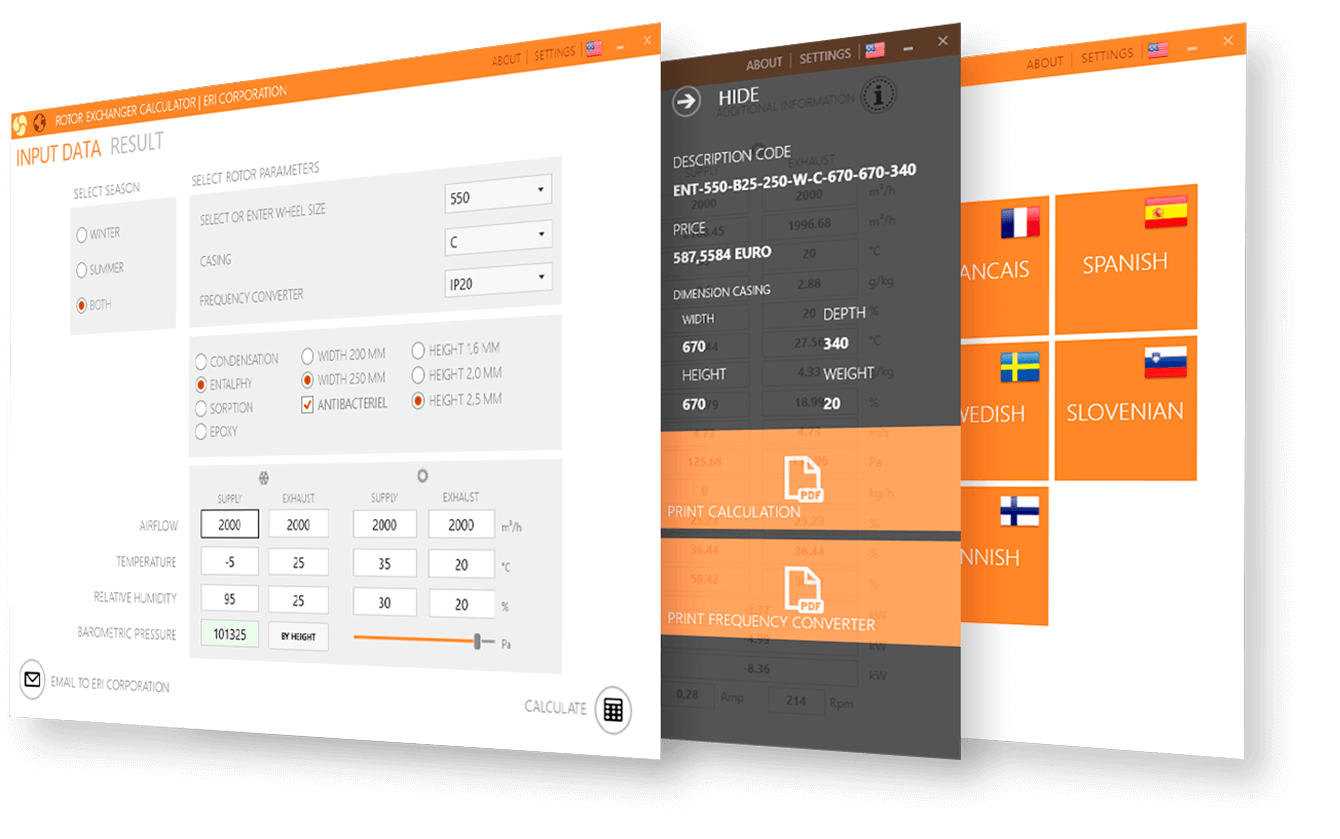
The selection software helps to determine the required parameters of the rotary heat exchanger. Available both in a standalone version and in dll format for integration into client software.
Download the softwareHEAT TERMINOLOGY
SENSIBLE HEAT
Sensible heat is heat that changes the temperature of an object.
LATENT HEAT
Latent heat is heat that acts on an object but does not affect its temperature. For example, if you add some heat to boiling water (100°C), the temperature will not increase, but the water will continue to boil.




